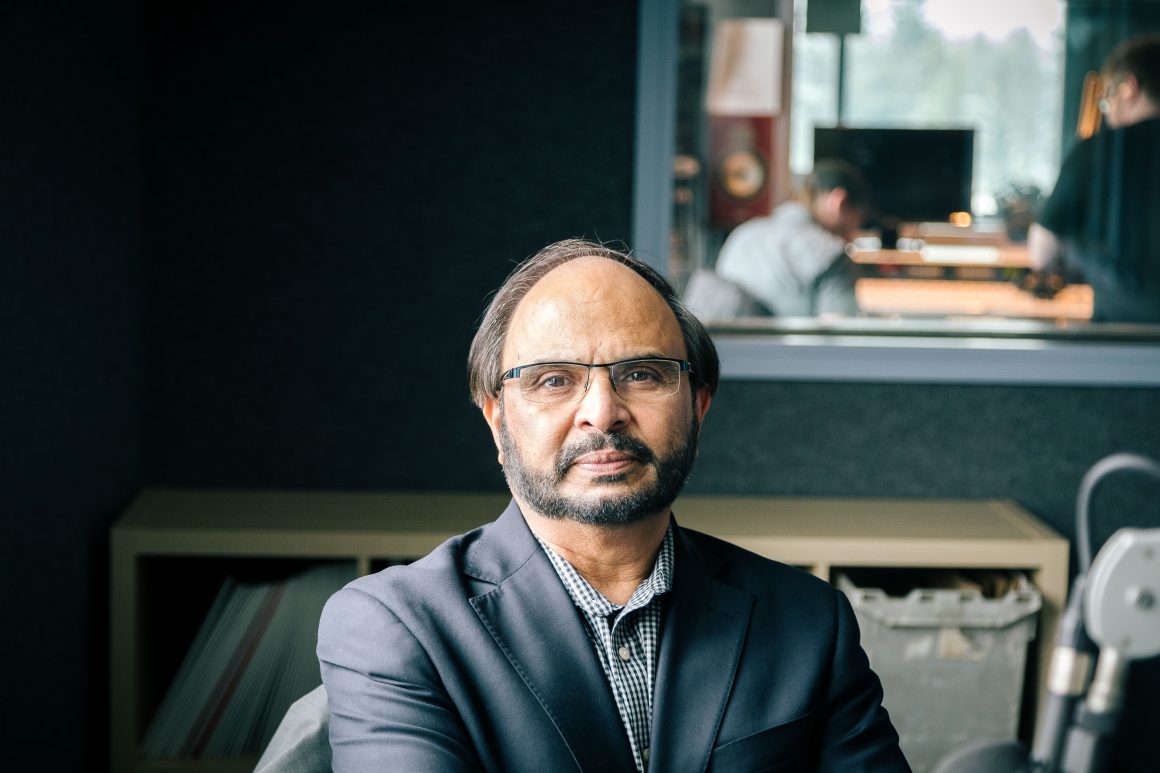
University of Calgary Professor honoured with Pakistani Medal of Honour
By Saima Asad, April 27 2017 —
A University of Calgary professor was recently honoured with Pakistan’s highest national award — the Tamgha-e-Imtiaz — for inventing the “brain on a chip.”
Naweed Syed is a professor in the department of cell biology and anatomy at the U of C. Born in Pakistan, he received his PhD from the University of Leeds in the United Kingdom before finishing his postdoctoral training in Calgary. He has published over 100 papers and received multiple research grants from the Canadian Institute of Health Research and the Natural Science and Engineering Research Council of Canada. He received the Tamgha-e-Imtiaz during a ceremony on March 23 — Pakistan Day — in Islamabad, the country’s capital city.
“It’s a really proud moment when you stand in front of the president and they announce all your contributions. What gave me goosebumps was when they mentioned my affiliation with the U of C and Canada. I think that was really the proudest moment and it feels really good,” Syed said.
Syed learned that he was chosen for the award on Aug. 14, 2016, Pakistan’s Independence Day.
“Actually, that was my daughter’s wedding day, so it was a double treat when the president announced the actual awardees,” he said.
Some businesses in Pakistan were quick to exploit Syed’s newfound fame. Syed learned that his image was being used to promote everything from insurance policies to milk when his friends recognized him on billboards.
“Many of my friends called me and said, ‘We see your pictures everywhere on the billboards and ads. You look hotter than the hottest models these days’,” he said.
Lacking the resources to take legal action against these companies, Syed sought out a solution that he hopes will benefit the nation and the companies. He is in the process of creating a trust fund for children in Pakistan who have been impacted by terrorism.
“I reached an agreement with them that each and every company will eventually support 100 children who have been impacted by terrorism. So, pay their education, their tuition fees, their uniforms and their living expenses,” he said.
Syed said he has faced some resistance from the companies he approached, but has received unexpected support from other sources.
“So many Canadians actually called and said, ‘whatever these companies in Pakistan raise, we will match those funds’,” he said.
Syed received the Tamgha-e-Imtiaz for inventing a silicone chip that records brain cells. The idea came to him when he was watching a Saskatchewan Roughriders game and got a call on his cellphone.
“Engineers have figured how to target millions and millions of cellphones, individual units, on a one-on-one basis. Why can’t we do this with brains?” he said. “The idea was that if natural replacement [of damaged brain cells] does not take place and if we are to understand how the brain functions, we have to acquire the ability to record from a large network of neurons.”
Syed created the chip with a research team in Germany. According to Syed, they were the first in the world to realize that brain damage is irreversible, as damaged brain tissue is not naturally replaced. He sought to create electronic devices that are biologically compatible.
“We created the first chip where we made a bionic hybrid whereby a computer chip or electronic device could talk to brain cells and then brain cells could talk back to it,” he said. “That was really the critical breaking point because people thought this is not doable.”
The chip has the potential for future applications in medicine and technology. Syed hopes it will lead to the creation of brain-controlled prosthetic limbs.
“Our dream is to be able to have these brain controlled prosthetic devices that we could implant in people.” he said. “We could also detect pain using chip technology and block chronic pain.”
The chip could also be used to block seizures in children who are undergoing epilepsy treatment. According to Syed, children who do not respond to epilepsy medication have to have brain tissue surgically removed and in many cases still continue to suffer seizures after surgery. Syed says his chip can be inserted during this surgical process to block future seizures.
“When the surgeon takes out a big chunk of tissue, we can put it on our chip and record spontaneously occurring seizures. Now we can do drug screening very quickly to find which particular drug, at what dose blocks the seizure in this child’s tissue,” he said. “When the seizures come back, we actually have a medication to block this child’s seizures.”
Another potential future use for this chip is the ability to drive cars solely by thinking about it.
“[When] you reach out to grab a glass and then bring it to your face to drink it, if I am recording your brain activity and if you just imagine the same thing without even moving your hand, the same areas of the brain light up. So we know exactly the thinking process and the actual physical doing process where the regions of the brain are. So if you can use these electrodes subcortically, you can actually fly a drone or drive a car,” he said.
